News
History of Train Depots in Sheridan County

The Burlington Train Depot in Clearmont Courtesy of Clearmont Historical Group
Today, trains going through Sheridan only carry freight; airplane parts, wind turbine blades, as well as coal, gravel, etc. But, when trains first came to Wyoming one of the main focus was not freight, it was people. Passenger. Trains have always carried freight and livestock, but during the first half of the 20th century, a traveler’s main source of fast, reliable transportation was the train.
With the coming of passenger trains, came the train depot. Passengers would disembark from or embark to their train journey at the depot. Many homesteaders came West on the train. Ben Vannoy, Clearmont homesteader, came from North Carolina to Sheridan on the train in 1905. He wrote in his memoirs, “….We got into Sheridan around midnight, but sat in the depot ’til after daylight.”
Before the wide spread use of telephones the telegraph was the means of long distance communication, especially on the western frontier. Telegraph poles and wires were strung along the railroad right-of-way.
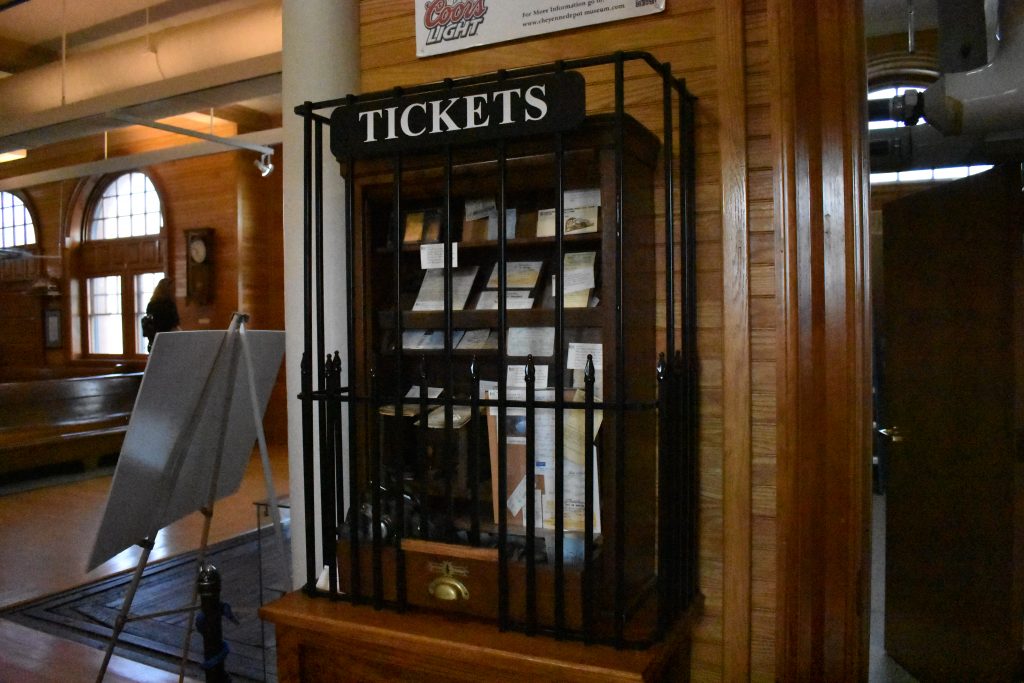
By 1851, the railroads began to see how convenient the telegraph could be to coordinate the arrival and departure of trains. If a train was running behind schedule, oncoming trains could be informed and could be moved to other sidings, avoiding possible train wrecks and long delays. The telegrapher maintained communication between the train dispatcher and trains operating on the rail system. Many telegraphers at most small stations, in addition to working for the railroad, also worked for various telegraph companies as a way to supplement their wages.
Many depots had upstairs living quarters for the station keeper and his family, and many were larger and better built than some of the other homes in the smaller towns. The station keeper was an important job in any town. Besides being necessary to the train, the depot and the station keeper were a vital part of the community as well.
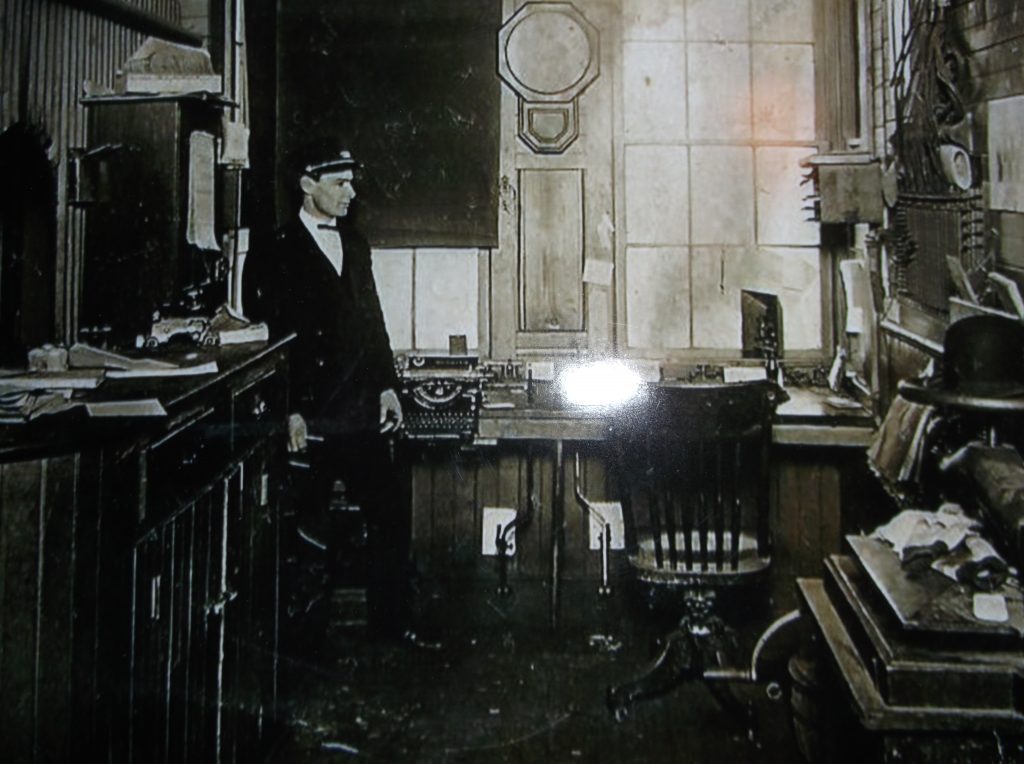
News came across the wires, and with the train stations housing the telegraph and the operator, people would come to the depot to hear the breaking national news, as well as exchanging local news and receiving telegrams from far flung friends and relatives.
Many depots looked alike. The Clearmont Depot was built around 1893 and bears a striking resemblance to the first Sheridan, Wyoming, wood depot, now listed on the historic sites registry. The reason for this was that it was cheaper to hire one architect for several stations rather than hire a separate architect to design each station.
Sometimes the same firm could be hired over and over to built new stations as they were commissioned. Depots were even built off site and transported to the town, via the train, to where a depot was needed. Soon railroads began to design the depots that were used as a trademark for each company.
They Cheyenne Union Pacific train depot was at one time the crown jewel in the UP railroad system and was the company’s most grandiose facility west of Council Bluffs, Iowa. The depot, now a museum, is the last of the grand 19th century depots remaining on the Union Pacific transcontinental railroad. It is a fine example of the Richardsonian Romanesque style.
In an article in the Cheyenne Illustrated, March 1, 1888 “The Union Pacific has recently completed one of the handsomest union depots in the West, at cost of over $100,000. It is 226 feet long by 55 feet wide, and is constructed of rough stone, with an imposing tower 128 feet high. The Cheyenne Burlington own fine depot built of brick and stone that has cost about $90,000.”
Completion of the depot in 1888 would prove timely for the city and region. The open range culture was nearly destroyed by the blizzard of 1886 and 1887, but with the coming of the rails, more industry and tourism came to fill the gap.
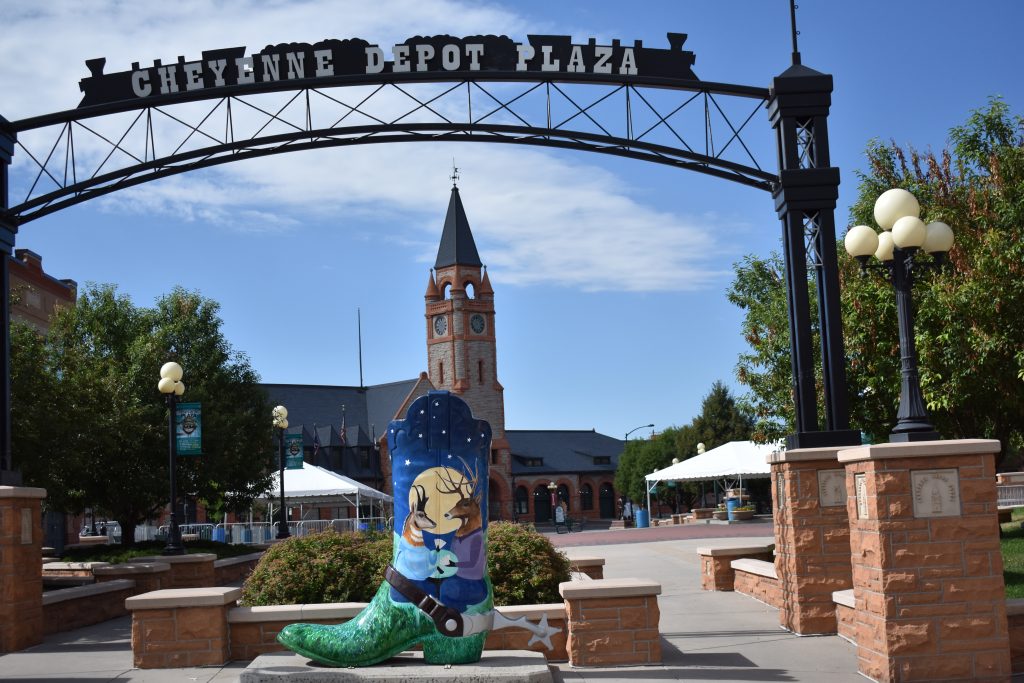
For around 80 years in Wyoming, the main way for people to travel long distances was the train. Short trips to and from the depot were still made by stagecoach, private wagons and buggies, or on horseback for many years until the advent of the automobile.
As more and more people found they could travel faster and more comfortably by train, depots became more than just a telegraph office or a mail stop. Train depots added baggage rooms, lounges, ladies’ sitting areas, smoking rooms, ticket offices, lodging or facilities for crew, means for unloading freight, mail rooms, parcel rooms, and additional rooms for other tasks.
And, much like the around airports today, hotels sprang up next to the depots, offering weary train travelers meals and rooms for the night. The Plains Hotel, Cheyenne, and The Sheridan Inn in Sheridan, and The Virginian in Medicine Bow were all built for passengers coming to Wyoming.
In a Sheridan Daily Enterprise, article on October 23, 1909, talks about the planned building of the brick depot in Sheridan.
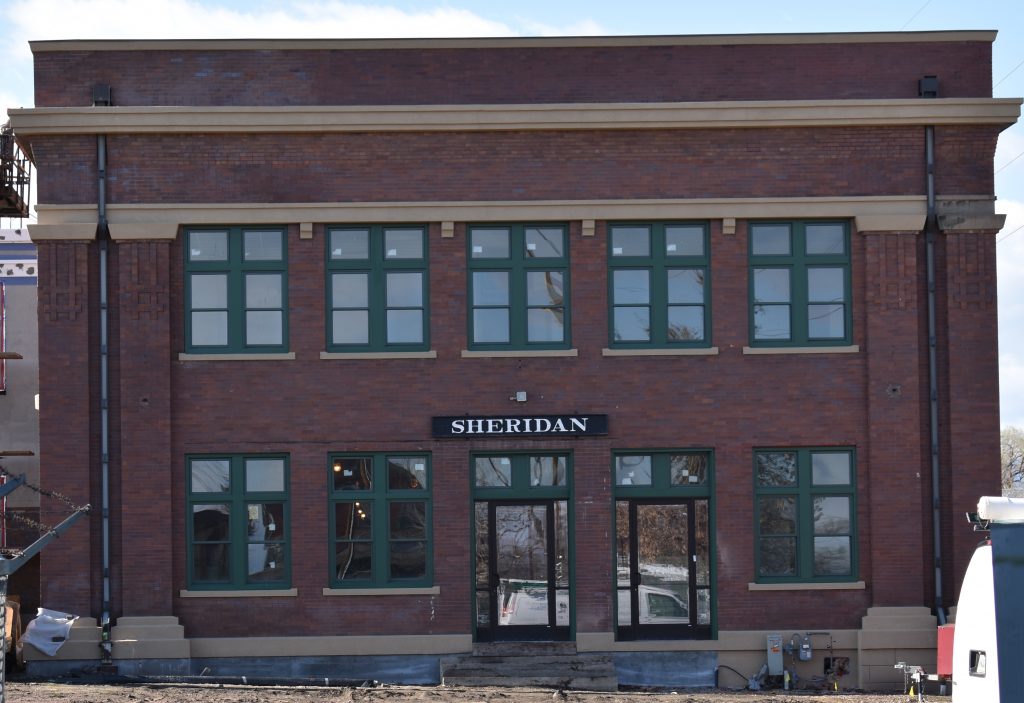
The Coming Years: The expenditure of $100,000 for a railroad passenger depot, not to mention an additional $30,000 for a freight house and new track facilities, may seem like an extraordinary large sum to appropriate for a city the size of Sheridan, but it is only an indication of the confidence of the Burlington officials in the rapid expansion of the city.
Coming from such sources, which include some of the most sagacious men in the railroad field today, it is a rare expression of faith in the community and surrounding country. At the same time that the Burlington officers are planning their construction work, they are doing something which many of our own business men are neglecting— giving the future full consideration. In many instances in Sheridan this is frequently overlooked. Buildings have been erected with a view only to the present and in a few years their owners will condemn themselves for their short vision.
In the Sheridan Daily Enterprise JULY 25, 1911: The freight house will be removed….superstructure to follow. The Burlington freight depot on Fourth street and Broadway will be removed to some other locality, to make way for the new passenger depot.
The golden age of train travel ended in the late 1960s. Then, as more and more people began to travel faster by air, or drove themselves, rail passenger service declined.
President Eisenhower initiated the Interstate highway system, first started for the army to transport military goods and troops, and then became the arteries of the country for car travel. It was easier and faster to travel by car, and one could drive directly to their destination.
The Burlington ended the passenger service between Denver, Colo., and Billings, Mont. in October 1967. The last passenger train from Alliance, Neb., through Sheridan to Billings, Mont. ran on Aug. 24, 1969. Without passengers, the depots became unnecessary.
The Clearmont depot was purchased by the Ucross Foundation, moved to Ucross. Today, according to the Ucross Foundation website, the depot, “…has been renovated to include four bedrooms…Two spacious writer’s studios are located downstairs in the depot.”
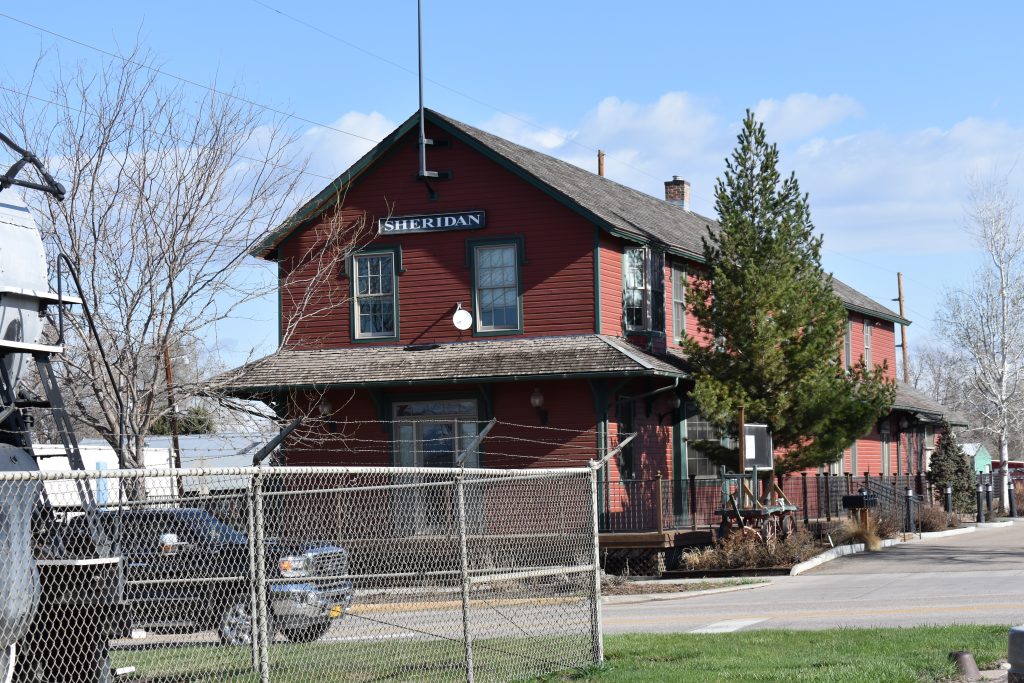
The wood depot and the brick depot in Sheridan still exist today in the Sheridan Railroad Historic District which also includes the Historic Sheridan Inn, and an old train engine.
Depots were once the center of a community, but, with the faster and more convenient modes of transportation, have become a part of Wyoming’s history.
(much of the info for this article came from “The Rails Come to Clearmont” Clearmont Historical Group book}


Mark Steingass
July 31, 2021 at 1:57 pm
This is an interesting story regarding railroad history in Sheridan…I would like to see more written about CB&Q Locomotive 5631 and what the city intends to do with it…will the city move it or leave it where it has been for 60 years?…so it seems to me most residents would like to see the CB&Q Locomotive 5631 remain where it has always been situated for the past six decades while some others like the idea of moving it to a “railroad park” For sure I would like to see the parts that were removed over 7-8 years ago by the City of Sheridan put back on the locomotive in the near future…(bell, headlight with number plates, locomotive class lights, gyralight (aka mars light) and five chime whistle)…so it seems that CB&Q 5631 needs some TLC at present…time to give CB&Q 5631 the respect it deserves as it is also a great part of railroad history